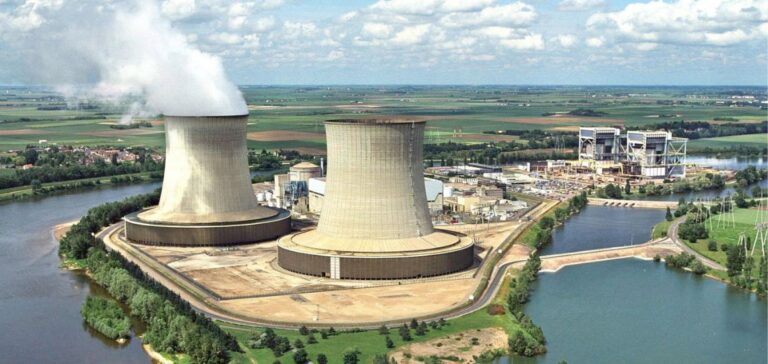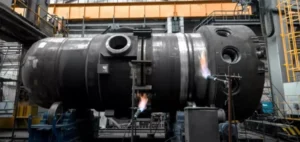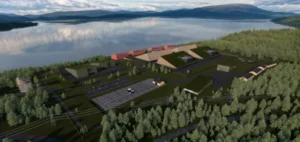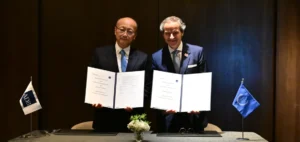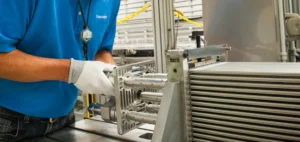A new generation of small U.S. nuclear reactors is attracting interest from communities and elected officials as far away as Europe, but the path to commercialization and operation is still fraught with regulatory and financial challenges.
At a congressional hearing a few days ago, U.S. Energy Secretary Jennifer Granholm reaffirmed the “importance of nuclear power” in the U.S. electricity supply in the coming years. In the absence of new traditional power plant projects and with the ageing of the existing fleet, the future of the industry lies with the new generation of small modular reactors ( SMR).
“I’ve talked to a lot of utility executives and … many say they want to build SMRs and not large reactors,” says William Freebairn, an industry specialist at S&P Global. According to him, it is often a question of replacing coal-fired power plants in remote areas, where “the possibility of installing a conventional reactor is very limited”.
The momentum is being encouraged by the U.S. government, whose Inflation Reduction Act (IRA) tax package, passed last year, provides tax credits of up to 30% of investments. Several American companies are currently developing their own SMRs, which are less expensive than their big brothers and, a priori, have a shorter construction time and lower fuel requirements, thus potentially less nuclear waste.
Only one of them, the model of the start-up NuScale, has nevertheless been validated by the American Nuclear Regulatory Commission (NRC), last January, six years after its application was filed. “Other countries in the world that are interested in (nuclear power) are looking closely at what is happening in the United States and are ready to (place an order) once the NRC has given its approval,” says Bahram Nassersharif, director of the nuclear engineering program at the University of Rhode Island.
Based in Portland, Oregon, NuScale originally planned to have its small 77-megawatt reactor, compared with about 1,000 for standard plants, in operation for the first time in 2026 in Idaho Falls, Idaho (northwest), but it had to push the deadline back to 2030. Time is of the essence, because in addition to U.S. competitors, other countries, including France and South Korea, are working on SMR production.
Some 70 to 80 projects coexist around the world. The bill for the NuScale plant was recently revised upwards by 75% to $9.3 billion, of which $4.2 billion will be covered by various government mechanisms. The group of communities under contract with NuScale has lost members and must commit to absorbing a minimum level of production by the end of the year, or the project could be cancelled altogether. “We are fully engaged in the search for new participants and also aim to get existing members to increase their commitments,” says Stephen Handy, spokesman for the group, which is called UAMPS.
“Much safer.”
“The initial project is always the most difficult,” sums up Chris Levesque, CEO of TerraPower, which is soon to break ground on a prototype of its reactor, dubbed Natrium and developed in collaboration with GE Hitachi, in Kemmerer, Wyoming, on the site of a coal-fired power plant. “There is the design cost, which we will not have to pay for the following, the regulatory approvals and the experience to be gained, because it is the first time”, explains the leader of this company created by a group of investors led by Bill Gates.
Unlike the NuScale prototype, which is pressurized water like conventional reactors, the Natrium uses molten salt technology, which does not present an explosion risk and does not require a large containment vessel. To achieve commissioning of a reactor as early as 2027 in Champagne, Illinois, another U.S. start-up, Ultra Safe Nuclear Corporation (USNC), has chosen a regulatory approach that allows it to have the various components of its facility certified as it is built rather than an a priori validation of the entire project.
In the longer term, USNC wants to offer reactors made of standardized components that can be produced in a factory and then shipped to the site, which would significantly reduce costs and lead times, says Daniel Stout, nuclear manager for the Seattle, Washington-based company. Americans remain divided on the use of nuclear power, although the proportion of those who oppose it has declined since 2016, from 54% to 47% in 2022, according to a Gallup poll.
The new players in the U.S. nuclear industry present their SMRs as having little or no risk of serious incident and radiation or contamination, because of their small size and the technologies used, which notably exclude core melting. “We want to prove to regulators that we don’t need massive evacuation plans,” Daniel Stout proclaims, “because our design rules out an accident that would warrant it.”
“Major accidents as well as more minor incidents have taught us a lot, and these lessons have been incorporated into the new models,” according to Baham Nassersharif, for whom “the new reactors are much safer overall than those of the previous generation.


